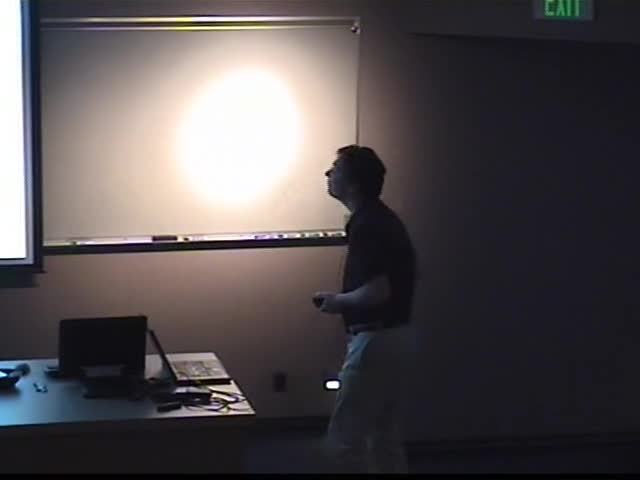Team 3: Social and communication networks
Presenter
August 5, 2009
Keywords:
- Communication networks
MSC:
- 81P45
Abstract
Project Description:
In recent years, the structure of complex networks has become
object of intense study by scientists from various disciplines;
see e.g. [1], [2] and [3], or the book-form paper collection
[4]. One often studied mechanism of growth and evolution in
such networks, e.g. social networks, is preferential attachment
[2]. In communications network engineering, network protocols
have been modeled mathematically using tools from optimization
[5] and game theory [6]. A picture has emerged of layered
networks (modeled as graphs) where each layer of the whole acts
non-cooperatively, implicitly optimizing its own objective,
treating other network layers largely as a black box. The
network layers interact dynamically, and implicit cooperation
towards a common overall objective is achieved by a suitable,
modular decomposition of tasks to the individual layers.
In this project, we will focus on the interaction between
social networks and communication networks. Given the
communication network, how do social networks grow and evolve?
Does preferential attachment account for the structure
observed? How do communication networks and their (often
protocol-induced) ‘preferences’ affect the structure of social
networks, and vice versa? We will use mathematics
(optimization, game theory, graph theory) and computer
simulation to investigate these questions.
Prerequisites:
Background: Optimization, Probability, Differential Equations.
Computer skills: Matlab, R, Python.
References:
[1] M.E. Newman, "The Structure and Function of Complex
Networks," SIAM Review, Vol. 45, No. 2, pp. 167-256, 2003.
[2] L.-A. Barabasi, R. Albert, "Emergence of Scaling in Random
Networks," Science, Vol. 286, No. 5439, pp. 509-512, 1999.
[3] D.J. Watts, "The ‘New’ Science of Networks," Ann. Rev.
Sociology Vol. 30, pp. 243-270, 2004.
[4] M.E. Newman, L.-A. Barabasi, D.J. Watts, "The Structure and
Dynamics of Networks," Princeton, 2006.
[5] M. Chiang, S.H. Low, A.R. Calderbank and J.C. Doyle,
"Layering as Optimization Decomposition: A Mathematical Theory
of Network Architectures," Proceedings of the IEEE, Vol. 95,
No. 1, pp. 255-312, January 2007
[6] E. Altman, T. Boulogne, R. El-Azouzi, T. Jimenez and L.
Wynter, "A Survey of Networking Games in Telecommunications,"
Computers and Operations Research, Vol. 33, No. 2, pp. 286-311,
2006.
